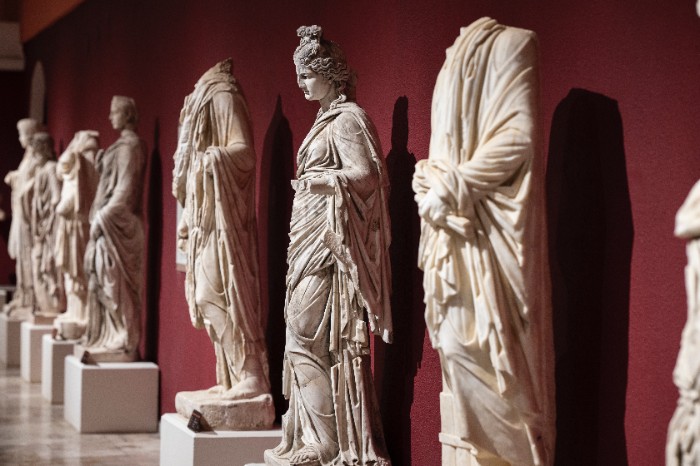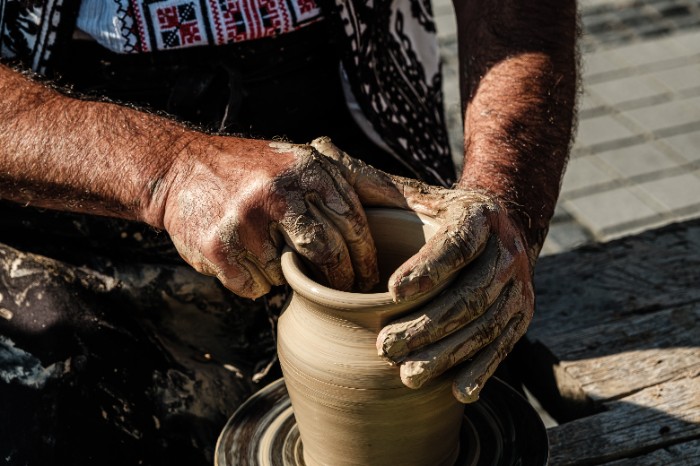It takes more than just talent to become a successful sculptor. Becoming a sculptor requires skill, practice, and dedication to the craft. So, if you’re looking for a guide on how to become a sculptor, this is it. Like other fields of art, sculpting requires knowledge of various techniques. This article will discuss the steps necessary to become a sculptor. Let’s get started!
What to Know About Being A Sculptor
A sculptor is an artist who uses sculpting techniques to create three-dimensional artworks. Talented sculptors use various materials to create their pieces, including clay, stone, wood, metal, and glass. Some sculptors carve their work from a single block of material, while others build it up from smaller pieces. The finished product can be a statue, a relief carving, or an abstract sculpture.
Modern sculpture is one of the oldest fine art forms in the world. The earliest known sculptures date back to prehistoric times when humans first began fashioning statues and other objects from stone and clay. Since then, the sculpture has evolved to encompass various styles and techniques. Today, there are many different types of sculptures being created by artists all over the world.
Read More: How To Become An Animator
Skills and Techniques Necessary for Sculpting

The core goal is to become a successful sculptor; this is only possible if you have the right skills and techniques. Here are the top skills for every professional sculptor:
- Carving
You’ll need to have a solid grasp of carving basics to succeed. This is the most traditional and foundational skill for sculpting and involves using tools like chisels, saws, and hammers to shape the material into the desired form.
- Drawing
A good understanding of drawing is essential for creating sculptures with precision and accuracy. Accurately drawing plans, measurements, and details will enable you to craft your work more quickly and effectively.
- Molding
Molding is another important technique used by freelance sculptors. By using molds of different shapes or sizes, you’ll be able to create unusual forms that would otherwise take a long time to complete without one. You might also try a commercial art studio to improve your molding skills.
- Creativity
Creativity is also a critical factor when it comes to sculpting. The artistic ability to think outside the box and create unique designs will help you stand out from the crowd.
Read More: How To Become A Podcast Producer
How To Become A Sculptor
Now that you know what it takes to become a successful sculptor, here are the steps you’ll need to take to get started:
Learn The Basics Of Sculpting
The first step is to learn the basics of sculpting techniques and materials. You can do this by taking classes at an art school or community college, reading books on the subject, or watching tutorials online. Art history is very essential for all beginners.
Develop Your Skills
Once you better understand sculpting techniques and materials, it’s time to develop your skills. Take courses in carving, drawing, molding, and other areas related to sculpture. Practice as much as possible to hone your skills and increase your proficiency in each technique. Additionally, create an outstanding portfolio.
Gain Experience

Working on your projects is a great way to gain experience and build up a portfolio of work. Try working with different materials and expanding into new areas like abstract sculpture. You can also look for opportunities to show your work publicly, such as entering it in competitions or displaying it at local galleries.
Read More: How To Become A Professional Artist
Build A Network
When you’re ready to start selling your art, you’ll need to build a network of potential buyers and clients. Invest time in social media, attend conventions and trade shows related to sculpture, and reach out to galleries that may be interested in showing your work. You’ll need to market yourself effectively if you want people to take notice of your art.
Education and Training for Sculptors
In addition to learning the basics of sculpting, getting an education can help you develop your skills and gain access to resources that can help you further your career. Degrees in sculpture or art will give you a better understanding of the field and provide opportunities for internships and apprenticeships with prominent fine artists.
Furthermore, some professional scalping jobs may require a specialized degree, so research the requirements before applying.
How To Gain Extensive Experience in Sculpting
If you want to become a successful sculptor, it’s important to have extensive experience. Some ways to gain experience include:
• Taking classes at an art school or community college
• Joining sculpture clubs or other organizations related to art
• Working with mentors who can provide guidance and critique your work
• Participating in competitions and exhibitions related to sculpture
• Volunteering as an assistant for local artists and galleries
A solid knowledge and practice foundation is key to success as a professional sculptor. Make sure you stay up-to-date on the latest techniques and trends in the field to create the most impressive works possible.
Read More: How To Become A Banker
Different Types of Sculpture Jobs
There are a variety of sculpture jobs that you can pursue, depending on your interests and skill level. Here are some examples:
Monumental Sculptor
Monumental sculptors create large-scale, permanent sculptures for public places. These may include statues, memorials, and other monuments.
Public Artist
Public artists create art pieces intended to be installed in a public space. They work closely with city officials and other stakeholders to ensure the piece meets all requirements and is suitable for its location.
Gallery Artist
Gallery artists create works meant to be displayed in galleries or sold privately. Therefore, they must develop a style that appeals to potential buyers and be able to market their work effectively.
Restoration Sculptor
Restoration sculptors repair existing sculptures and restore them to their original condition. This job requires extensive knowledge of materials and techniques and a deep understanding of historical works.
Formal Education vs. Self-Taught Sculpting

The decision to pursue formal education or become a self-taught sculptor is up to you. Consider your interests, skills, and goals before making a decision.
- Formal Education
If you want to gain an in-depth knowledge of sculpture techniques, a degree program or apprenticeship can help jumpstart your career. These programs will also provide access to resources that may not be available through self-teaching.
- Self-Taught Sculpting
Self-teaching may be the best way for those who prefer to learn independently rather than in a structured setting. You’ll have more freedom to explore different materials and techniques without being constrained by curriculums or deadlines. You’ll also need to be disciplined enough to stay motivated and work independently or with other artists.
Read More: How To Become A Wax Technician
Conclusion
Becoming a successful sculptor requires dedication and hard work. You’ll need to develop your skills, gain experience, and effectively market yourself if you want people to take notice of your art. Consider both formal education and self-teaching when deciding the best path for you. Good luck on your journey!
